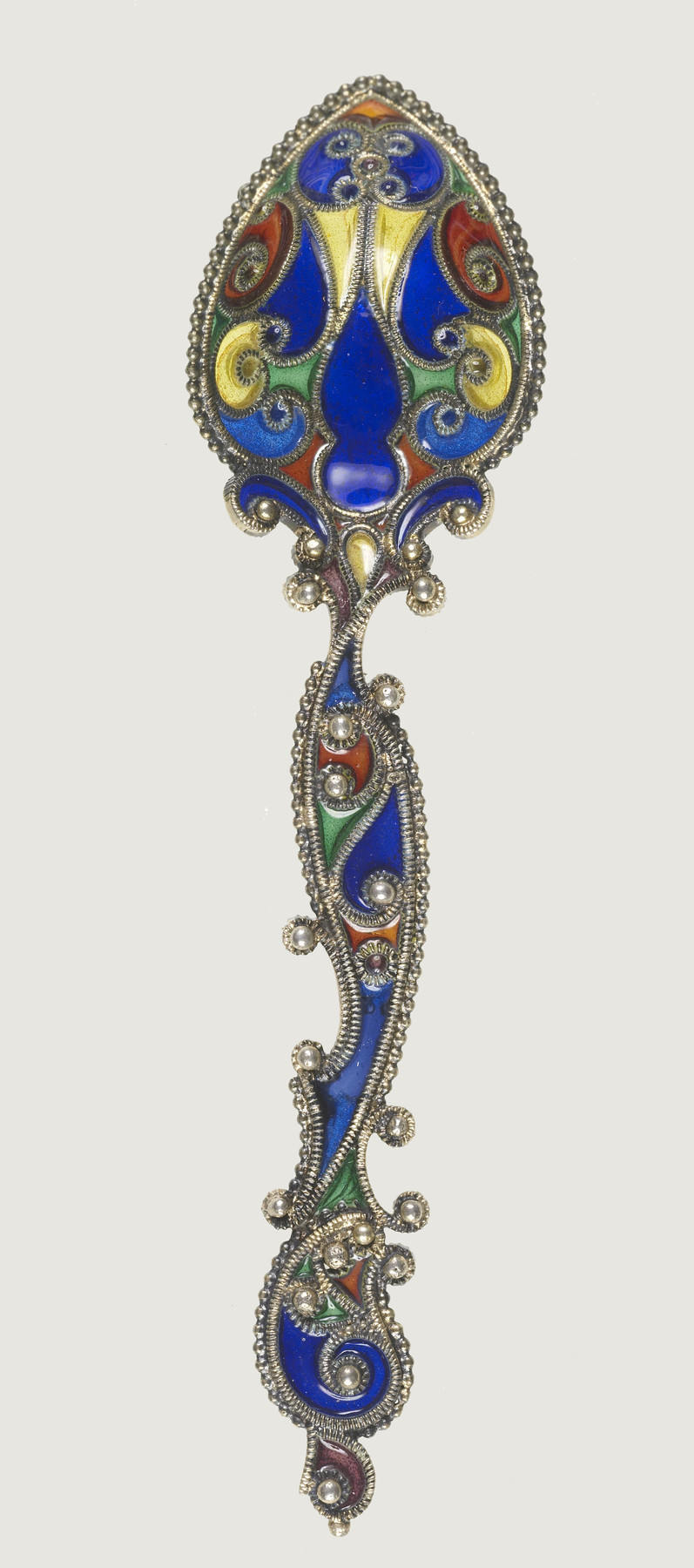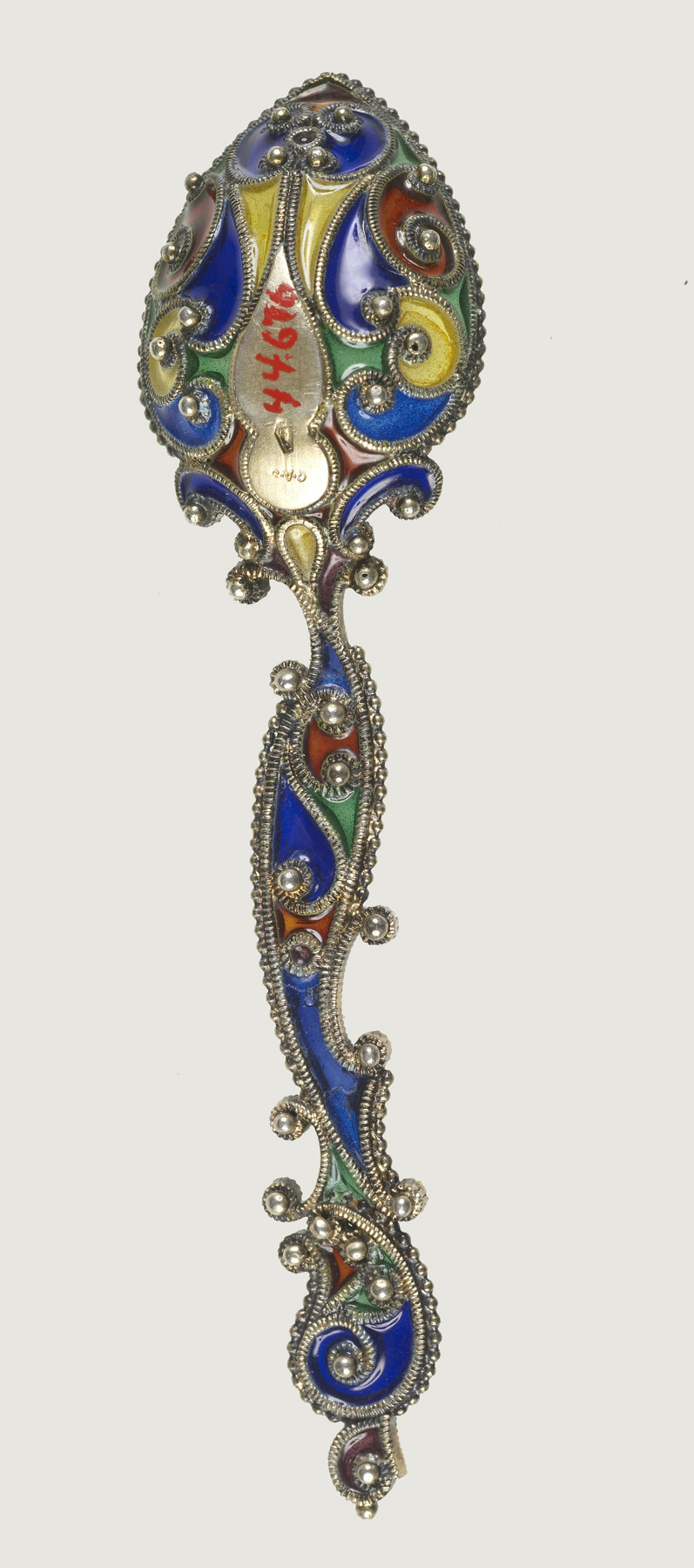Plique-à-jour Spoon
(18th and 19th Centuries )
In plique-à-jour enameling, the metal base is either in a cage form or is pierced to make openings, which are then filled with enamel to create an effect similar to stained glass. This small spoon was made by the firm of Georg Adam Scheid, which was active in Vienna in the late nineteenth and early twentieth centuries. Scheid, a native of Germany who spent much of his life in Austria, specialized in the manufacture of items that often included precious metals like silver and gold as well as fine enameling—both of which are seen in this example.
Inscription
Provenance
Provenance (from the French provenir, 'to come from/forth') is the chronology of the ownership, custody, or location of a historical object. Learn more about provenance at the Walters.
Mr. and Mrs. Leslie Legum, Baltimore; given to Walters Art Museum, 1989.
Conservation
| Date | Description | Narrative |
|---|---|---|
| 4/5/2016 | Examination | Examined for exhibition. |
| 4/5/2016 | Examination | Treatment not needed. Marks on back of bowl identified. Maker is probably Georg Adam Scheid, Vienna. Likely dates are 1872-1911 based on maker's mark, small mark and Scheid's retirement date. |
Geographies
Russia, Moscow (Place of Origin)
Measurements
H: 3 7/8 in. (9.8 cm)
Credit Line
Gift of Mr. and Mrs. Leslie Legum, 1989
Location in Museum
Not on view
Accession Number
In libraries, galleries, museums, and archives, an accession number is a unique identifier assigned to each object in the collection.
In libraries, galleries, museums, and archives, an accession number is a unique identifier assigned to each object in the collection.
44.676




